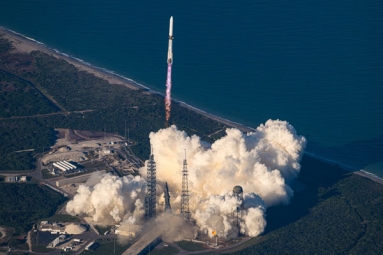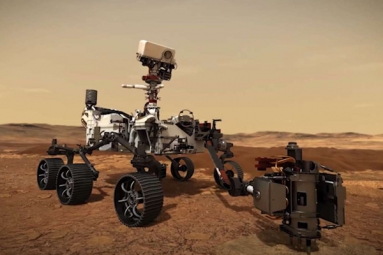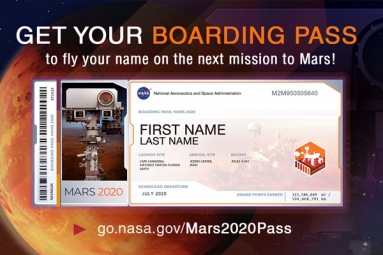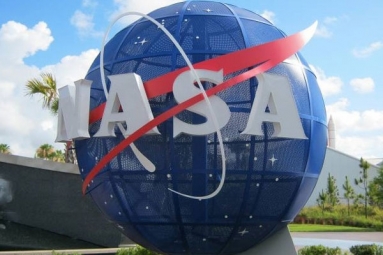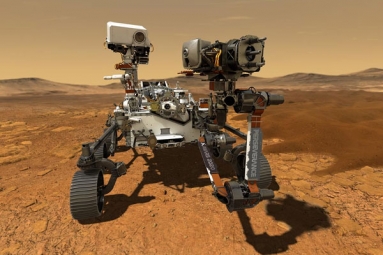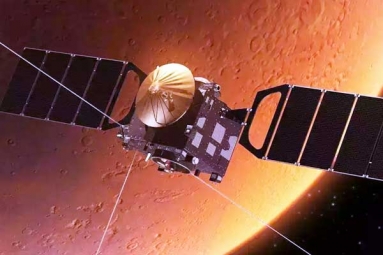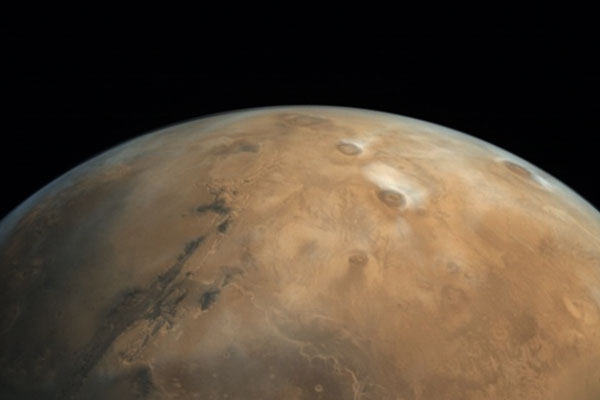
(Image source from: Facebook.com/ISRO)
After the historic success of Mangalyaan, the Indian Space Research Organization (Isro) is gearing up to return to Mars with an even bigger, bolder and more daring mission. Building on the success of the Mars Rover Mission, also known as Mangalyaan, the second version plans to go a step further and land a rover and a helicopter on the surface of Mars. The mission, unveiled at the Center for Space Applications on National Technology Day, promises to make India the third country after the US and China to successfully land a probe on Mars. ISRO's spacecraft will reach Mars in a revolutionary way. Instead of using traditional methods such as airbags or ramps, the rover will be slowly lowered to the Martian surface by an advanced sky crane. This system ensures a safe and precise landing even on the harsh Martian terrain and will likely be the landing method for future human landings on Mars in about 20 years. In addition, a hypersonic parachute is being developed to handle hard landings in the Martian atmosphere. Mars' atmosphere is about 1% thinner than Earth's, making traditional parachutes ineffective. If the spacecraft were to enter the Martian atmosphere at high speed, a hypersonic parachute would have to be deployed at this speed, which would significantly slow down the landing speed.
This reduces the intense heat caused by friction and ensures a controlled and stable landing. NASA took a similar approach when landing its Perseverance rover in 2021. One of the most exciting components of Mangalyaan 2 is the helicopter, which is designed to fly in Mars' thin atmosphere. This engineering marvel, known as MarBLE (Mars Boundary Layer Probe), will carry scientific instruments to study the Martian atmosphere during its 100-meter flight. With this success, India became the second country after America's Ingenuity helicopter to fly a helicopter on Mars, beating China in the competition. To maintain constant communication with the rover and the helicopter, Isro plans to launch a relay communication satellite before the main mission. The satellite acts as an important link between Mars and Earth, providing a constant flow of data and mission control. Mangalyaan 2 will be launched using Isro's most powerful launch vehicle to date, the Launch Vehicle Mark-III (LVM3). Mars is about 225 million kilometers from Earth, requiring a long journey of several months.
Mars has a very harsh environment with extreme temperature fluctuations ranging from 20°C in summer to -73°C in winter. Mars remains a destination for space exploration, although the success rate of more than 50 missions from various space agencies is less than 50 percent. There are three main reasons to focus on Mars. First, humans are explorers, and one of our fundamental tasks is to find out whether life exists elsewhere in the universe. Mars is the most Earth-like planet in the solar system, making it the perfect place to explore this question. There is evidence that Mars once had abundant water, rivers, a warm climate and a thick atmosphere, creating a potentially habitable environment. Second, scientific interest in Mars is enormous. While life evolved on Earth, Mars experienced dramatic climate change. The study of volcanoes, meteorite impact craters, and other geophysical processes provides insight into its history.
Atmosphere samples could reveal important details about Mars' formation and evolution, helping us better understand the planet and its future. Third, robotic exploration of Mars will help reduce the costs and risks of future human exploration. These missions can search for potential resources and assess the risks of ground operations. Elon Musk announced SpaceX's ambitious plans to build a human colony on Mars by 2050 and populate the planet with a million people. Although these plans may seem difficult now, it is important to understand the dangers of Mars before sending an astronaut. Identifying biological hazards in soil and dust is critical to planning and preparing for future missions. Mangalyaan 2 is more than just sightseeing. It pushes India into the role of explorer. The purpose of this mission is to discover valuable scientific data, map the Martian landscape, and pave the way for future pioneers. The knowledge and technology promoted through this mission will have a far-reaching impact and lead to development in various areas. New materials could be discovered on our sister planet with applications that will improve our daily lives.
This is the true power of space exploration. It's not just about reaching for the stars, but using that knowledge to improve life on Earth. These materials could aid future colonization efforts and provide insights into Earth's geophysical processes. India's Mangalyaan-2 mission is a major step towards space power status. It showcases India's unwavering scientific spirit and pursuit of space exploration for the benefit of all humanity.







